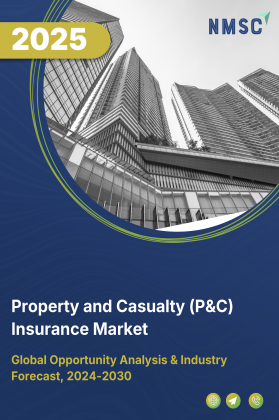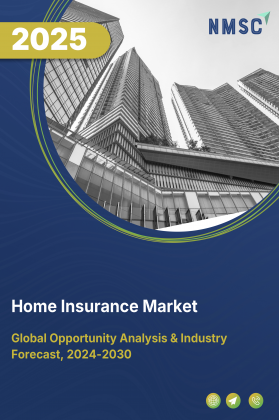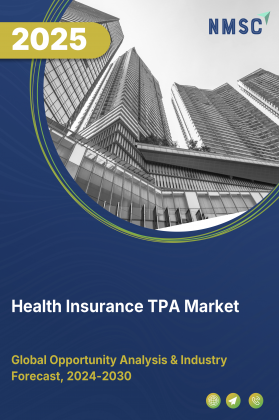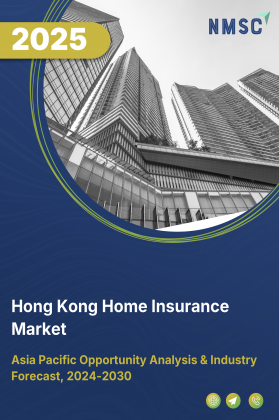
Property and Casualty (P&C) Insurance Market by Insurance line (Personal Lines and Commercial Lines), by Customer Segment (Individuals, Businesses, Public Sector & Institution and Disposable/Single-Use), by Distribution Channel (Agency & Broker, Direct & Digital and Partnership & Embedded Models), and by Insurer Type (Private Carriers, Public Carriers, Digital-First InsurTechs and MGAs & Reinsurers) – Global Opportunity Analysis and Industry Forecast, 2025–2030.
Industry Overview
The global Property and Casualty (P&C) Insurance Market size was valued at USD 3.44 trillion in 2024 and is expected to reach USD 3.75 trillion by the end of 2025. The industry is predicted to reach USD 5.77 trillion by 2030 with a CAGR of 9.0% from 2025-2030.
The market is expanding steadily, driven by growing awareness of digital and environmental risks. As cyberattacks and climate-related events become more frequent, demand for liability and property coverage is rising. Insurers are embracing digital tools like AI and automation to streamline operations, improve claims processing, and personalize services. Supportive regulatory changes, such as flexible licensing and innovation-friendly policies, are making the market more accessible.
However, rising reinsurance costs are pressuring profit margins, especially for smaller players. On the contrary, companies such as Allianz and AXA are effectively navigating these challenges by leveraging their scale, investing heavily in advanced analytics, and forming strategic partnerships to enhance underwriting precision and expand their digital capabilities.
Rising Risk Awareness Drives the Property and Casualty Insurance Market Growth
One of the primary forces fueling the growth of the market is the growing awareness of evolving risks, especially among businesses and individuals facing emerging threats. With a sharp rise in cybercrime and environmental disruptions, the need to safeguard physical and digital assets has become more urgent than ever.
For instance, a recent report by CloudSEK, as cited by the Vivekananda International Foundation, estimates that Indian entities alone could lose USD 2.41 billion to cybercrimes in 2025. This alarming figure underscores the vulnerability organizations face in the digital age, prompting a surge in demand for cyber insurance and liability insurance.
Increasing Frequency and Severity of Natural Disasters Drives Market Growth
The rising incidence of natural disasters such as floods, wildfires, storms, and heatwaves driven by climate change is a key driver for the P&C insurance market. For instance, in 2024, there were 27 individual weather and climate disasters with at least $1 billion in damages.
These events cause significant damage to residential, commercial, and public infrastructure, increasing the demand for insurance coverage to protect against property loss and business interruption. As climate risks intensify across regions, both individuals and businesses are seeking more comprehensive and higher-value P&C policies, driving market growth and reshaping underwriting strategies.
Regulatory Support Accelerates Market Demand
Supportive regulatory initiatives are emerging as a key driver behind the expanding size of the market. By creating a favorable policy environment, regulators are enabling insurers to scale operations, introduce innovative products, and reach wider segments of the population.
In India, for example, this regulatory push is playing a vital role in the industry's upward trajectory. As highlighted in a 2025 report by the India Brand Equity Foundation (IBEF), India’s insurance sector is among the top-performing industries, with growth fuelled not only by rising incomes and awareness but also by progressive reforms.
These include streamlined product approval processes, flexible pricing frameworks, and the introduction of digital licensing, which collectively reduce entry barriers and stimulate competition. The use of regulatory sandboxes has further encouraged insurtech innovation, helping insurers tailor solutions for modern risks.
Additionally, mandatory policies such as motor and liability insurance continue to expand market participation. Altogether, these regulatory measures are making the P&C insurance landscape more accessible, efficient, and future-ready amplifying both the market’s reach and its long-term growth potential.
Rising Reinsurance Costs Squeeze P&C Insurance Profitability
Rising reinsurance costs are becoming a significant drag on the profitability of the market. Reinsurance helps insurers manage major losses, but recent years have seen a sharp rise in its pricing. This surge forces insurers to either absorb higher costs, reducing margins, or raise premiums, risking customer attrition. Smaller insurers are especially vulnerable, often limiting coverage or exiting high-risk markets altogether. These growing costs are not just squeezing profits; they're constraining the industry's ability to grow and remain competitive.
The Introduction of AI and Blockchain Creates Future Opportunity
The integration of artificial intelligence (AI) and blockchain technology is revolutionizing the market. AI is enabling insurers to analyse vast volumes of data in real time, improving underwriting accuracy, detecting fraud, and enhancing customer engagement through personalized offerings.
On the other hand, blockchain is introducing transparency and security in policy administration, claims management, and data sharing across stakeholders. Smart contracts powered by blockchain can automate claims settlement, reducing processing time and operational costs. Together, these technologies are streamlining insurance workflows, enhancing trust, and paving the way for more agile and customer-centric insurance models.
Market Segmentation and Scope of the Study
The property and casualty insurance market report is segmented by insurance lines, customer type, distribution channel, insurer type, and region. Insurance lines include personal and commercial. Customer segments span individuals, businesses, and public institutions. Distribution is divided into agency/broker channels, direct & digital, partnership & embedded and others. The market also differentiates by insurer type, including private carriers, state-owned entities, digital-first insurers, MGAs, and reinsurers. Geographically, it is analysed across North America, Europe, Asia-Pacific, and Rest of the World, each with distinct regulatory and demand dynamics.
Geographical Analysis
High-value asset ownership across North America particularly in homes, vehicles, and commercial properties continues to be a key driver of P&C insurance demand. With most households owning significant assets, the risk of damage from natural disasters, accidents, or theft makes insurance essential.
The surge in property value raises the financial stakes, making adequate insurance coverage even more critical. At the same time, businesses rely on insurance to protect their infrastructure and ensure continuity, further contributing to the growing consumption of P&C insurance across the region.
The ongoing modernization of Europe’s aging infrastructure such as roads, bridges, utilities, and public buildings, is driving growth in the P&C insurance market expansion. These large-scale projects increase exposure to construction, liability, and environmental risks, prompting higher demand for specialized insurance products like builder’s risk, engineering, and third-party liability coverage. As governments and private sectors invest in upgrading infrastructure to meet safety, sustainability, and climate resilience goals, insurers play a critical role in managing associated risks, thereby fuelling the expansion of the P&C sector across Europe.
Asia-Pacific is increasingly vulnerable to natural disasters like floods, typhoons, and earthquakes, especially in countries such as Japan, India, and the Philippines. With much of the resulting damage uninsured, the region faces a significant protection gap. To address this, the Asian Development Bank Institute (ADBI) and Global Asia Insurance Partnership (GAIP) have introduced the CBRRP to build risk awareness and insurance capacity in ASEAN+3 countries. These efforts are helping drive demand for property and casualty (P&C) insurance as climate risks continue to escalate.
In the rest of the world, including regions like Latin America, the Middle East, and Africa, governments in emerging markets are accelerating property and casualty insurance market share uptake through mandatory policies and awareness initiatives. In Indonesia, nearly 11,000 public buildings have been insured through a domestic consortium of over 50 insurers and international reinsurers, according to a 2024 World Bank report.
Similar measures such as compulsory motor insurance and subsidized crop schemes across Asia, Africa, and Latin America are helping reduce public disaster costs and broaden insurance coverage in previously underserved markets.
Strategic Innovations Adopted by Key Players
The top key players are strategically innovating to stay competitive amidst rising operational risks, evolving customer expectations, and regulatory pressures. Companies such as Allianz, AXA, and Chubb are targeting acquisitions, regional expansions, and strategic partnerships to diversify their product offerings and strengthen market presence.
-
In July 2025, Allianz Global Investors acquired a minority stake in Yondr Group, a global data centre platform, as part of its expansion into digital infrastructure investment.
-
In July 2025, Zurich acquired Toronto-based cyber insurtech BOXX, integrating it into Zurich Global Ventures while maintaining its standalone brand. The move enhanced Zurich’s cyber insurance capabilities and extended its value adding digital risk solutions globally.
-
In May 2025, Berkshire Hathaway Specialty Insurance (BHSI), had expanded their commercial P&C offerings, launched indemnity products in Italy, and appointed underwriting leaders in casualty lines.
-
In March 2024, State Farm’s direct homeowner premiums had risen to $31.46 billion, up 16.4%, marking its fastest growth since 2002.
-
In February, 2024, State Farm and Pacific Life formed a strategic partnership enabling State Farm agents to offer Pacific Life underwritten variable universal life (VUL) insurance via State Farm’s distribution channels.
Key Benefits
-
The report provides quantitative analysis and estimations of the market from 2025 to 2030, which assists in identifying the prevailing industry opportunities.
-
The study comprises a deep-dive analysis of the current and future property and casualty market trends to depict prevalent investment pockets in the sector.
-
Information related to key drivers, restraints, and opportunities and their impact on the market is provided in the report.
-
Competitive analysis of the players, along with their market share is provided in the report.
-
SWOT analysis and Porters Five Forces model is elaborated in the study.
-
Value chain analysis in the market study provides a clear picture of roles of stakeholders.
Property and Casualty Insurance Market Key Segments
By Insurance Line
-
Personal Lines
-
Private Passenger Auto
-
Homeowners / Residential
-
Personal Liability & Umbrella
-
Travel, Pet, Valuables
-
-
Commercial Lines
-
Commercial Property & Fire
-
Commercial Auto / Fleet
- General Liability
-
Worker’s Compensation
-
Engineering & Construction
-
Marine, Aviation & Transport (MAT)
-
Cyber & Technology
-
Professional Liability (E&O, D&O)
-
Crop & Agricultural
-
Other Speciality
-
By Customer Segment
-
Individuals
-
Businesses
-
Public Sector & Institutions
-
Disposable/Single-Use
By Distribution Channel
-
Agency & Broker Channel
-
Independent Agents & Brokers
-
Captive / Exclusive Agents
-
Managing General Agents (MGAs) & Wholesalers
-
-
Direct & Digital
-
Insurer Websites & Mobile Apps
- Call Centers, Direct Mail
-
-
Partnership & Embedded
-
Bancassurance (Banks)
-
Affinity Groups (Unions, Associations)
-
Embedded Insurance (OEMs, Retailers, saaS Platforms)
-
Aggregators & Comparison Sites
-
By Insurer Type
-
Private-Sector Carriers
-
Public-Sector / State-Owned Carriers
-
Digital-First Insurers (InsurTechs)
-
Managing General Agents (MGAs) & Wholesalers
-
Reinsurers
By Region
-
North America
-
The U.S.
-
Canada
-
Mexico
-
-
Europe
-
The U.K.
-
Germany
-
France
-
Italy
-
Spain
-
Denmark
-
Netherlands
-
Finland
-
Sweden
-
Norway
-
Russia
-
Rest of Europe
-
-
Asia-Pacific
-
China
-
Japan
-
India
-
South Korea
-
Australia
-
Indonesia
-
Singapore
-
Taiwan
-
Thailand
-
Rest of Asia-Pacific
-
-
RoW
-
Latin America
-
Middle East
- Africa
-
Key Players
-
Berkshire Hathaway Inc
-
The People’s Insurance Co. (Group) of China Ltd. (PICC)
-
Progressive Corporation
-
AXA SA
-
Liberty Mutual Holding Company Inc.
-
Allstate Corporation
-
Zurich Insurance Group.
-
Ping An Insurance (Group) Co. of China Ltd.
-
The Travelers Companies, Inc.
-
Chubb Limited
-
CNA Financial Corporation
-
Assicurazioni Generali S.p.A.
-
Tokio Marine Holdings, Inc.
-
United Services Automobile Association (USAA)
-
Sompo Holdings, Inc.
-
MS&AD Insurance Group Holdings, Inc
-
Talanx AG
-
Aviva plc
Report Scope and Segmentation:
|
Parameters |
Details |
|
Market Size in 2025 |
USD 3.75 Trillion |
|
Revenue Forecast in 2030 |
USD 5.77 Trillion |
|
Growth Rate |
CAGR of 9.0% from 2025 to 2030 |
|
Analysis Period |
2024–2030 |
|
Base Year Considered |
2024 |
|
Forecast Period |
2025–2030 |
|
Market Size Estimation |
Billion (USD) |
|
Growth Factors |
|
|
Countries Covered |
28 |
|
Companies Profiled |
15 |
|
Market Share |
Available for 10 companies |
|
Customization Scope |
Free customization (equivalent to up to 80 working hours of analysts) after purchase. Addition or alteration to country, regional, and segment scope. |
|
Pricing and Purchase Options |
Avail customized purchase options to meet your exact research needs. |

















 Speak to Our Analyst
Speak to Our Analyst

























